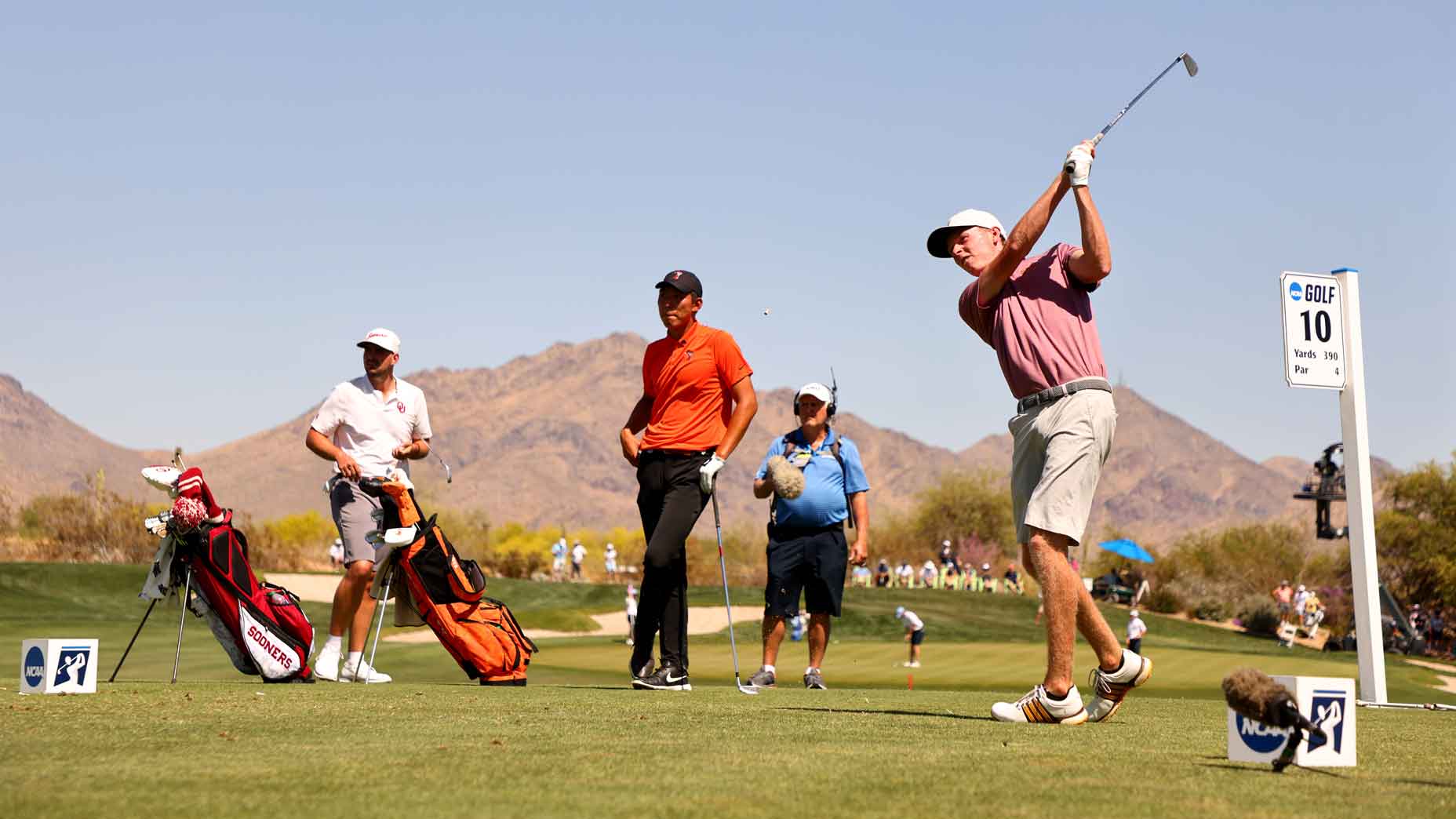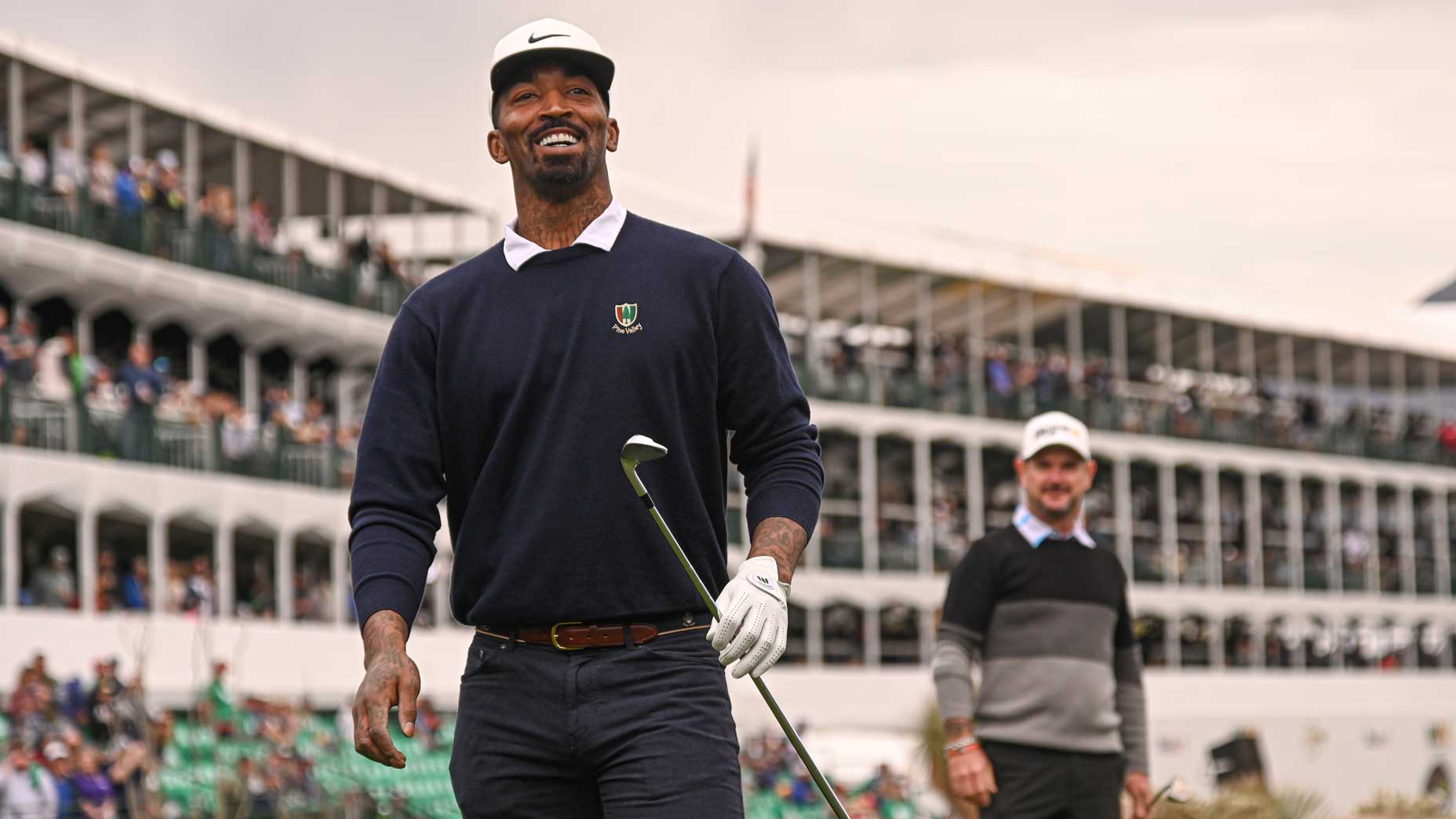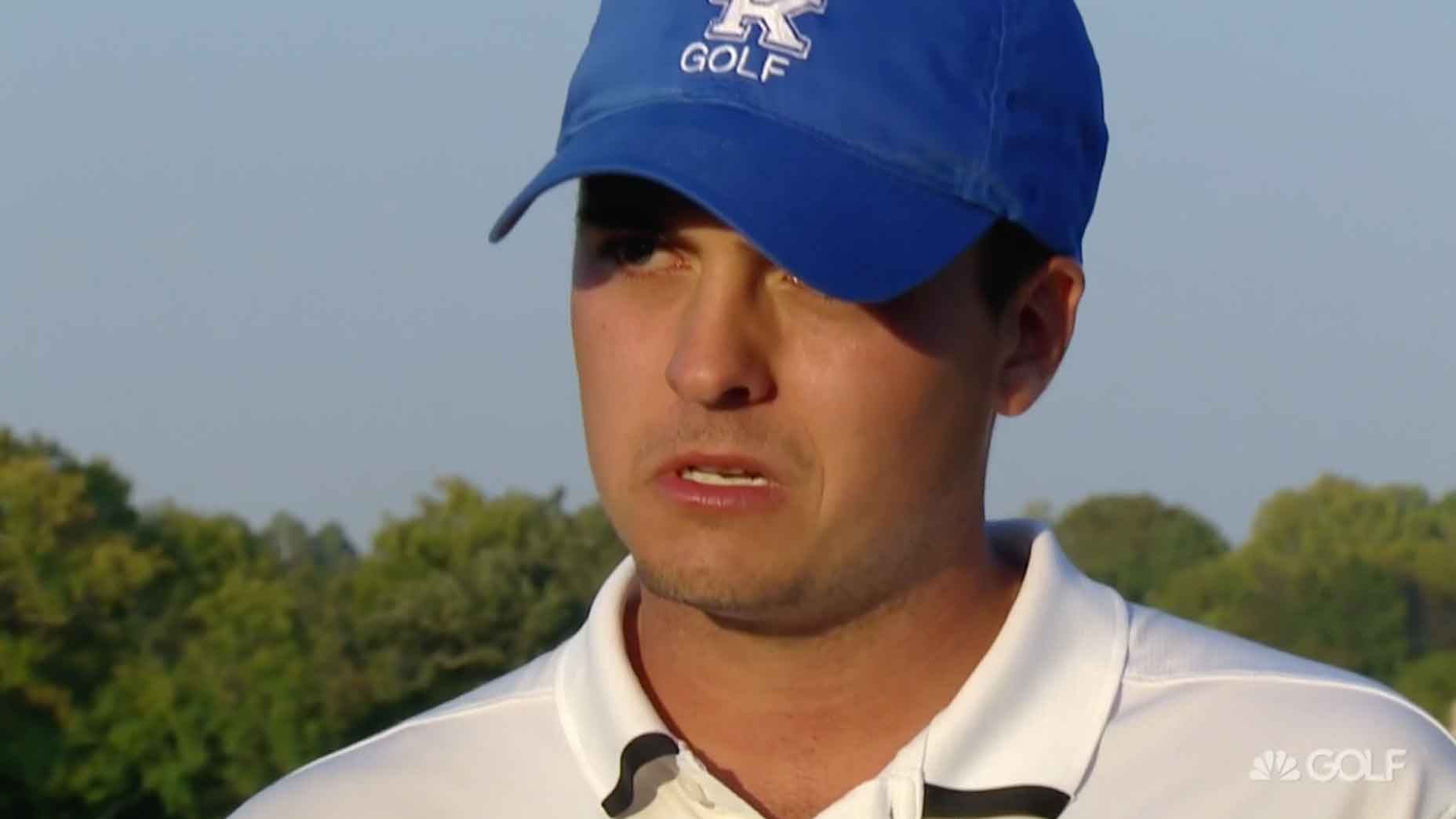In the era of prodigious purses and savvy strategic thinking, pro golfers are making it their business to be in business outside of their sport, while show-biz stalwarts and superstar athletes like Steph Curry, Peyton Manning and Andy Roddick are discovering that the smart money is in golf itself. In our Golf & Business package (which you can also find in the Jan/Feb 2022 issue of GOLF Magazine), we’ll go inside their wallets.
Part 1: Why Abraham Ancer and Mark Wahlberg teamed up in the tequila business
Part 2: Bubba Watson the businessman is a lot like Bubba the golfer
Part 3: How ascendant attire brand Johnnie-O made a splash on the golf course
Part 4: Why Peyton Manning is making cold calls about this 9-hole golf course
Part 5: Jason Kokrak’s passion is collecting. The payoff is a houseful of liquid gold
Part 6: On the course, Stephen Curry is scoring just about everywhere
Part 7: Meet Sportsbox AI, a swing app with potentially revolutionary swagger
Part 8: 6 PGA Tour-player-backed restaurants serving up dynamite eats
Part 9: Why Niall Horan is behind the youthquake happening in U.K. golf
***
The announcements came back-to-back: “Welcome to the Rapsodo Squad, @pierceson_coody.” Then the next: “Welcome to the Rapsodo Squad @parker_coody! Let’s get to work!”
The Coody brothers, Pierceson and Parker, play for UT Austin. Until this year, that status would have precluded them from signing with a launch monitor company like Rapsodo. But under the NCAA’s new NIL (Name, Image and Likeness) legislation, golfers are among the amateurs able to profit on their status.
Superstar investors Tiger Woods and Rory McIlroy are playing the long game — by betting on the short gameBy: Sean Zak
Most college golfers lack the visibility of their football or hoops counterparts, some of whom have landed big-money endorsements. But that’s not to say NCAA golf lacks star power and their own flow of dough and perks. Check out NCAA golfer J.R. Smith’s Instagram. You’ll find a post thanking TaylorMade for treating him and his teammates so well. Arkansas’ John Daly II namechecks TaylorMade too, alongside nods to Nike and headcover maker Winston Collection. What matters most is follower counts, though the conversion of followers to dollars is different for everyone. Daly’s Insta followers are now 60,000 strong. Smith’s are a whopping 5.9 million. Want to reach the 13,000 followers of Stanford standout Rachel Heck? You’ll find “NIL Contact Info” right there in her bio. She was among the first collegians to sign with Excel Sports. They’ll do the dealmaking for her.
The USGA is also onboard with NIL — sort of. College golfers still aren’t allowed to be paid for instruction because the USGA has deemed it a violation of amateur status. International student-athletes are left out in the cold too. There are complexities around scholarships. Compliance is messy. There are restrictions around which brands athletes can endorse, how they can leverage their connections with their universities and even where they can create content.
It’s a brave new world. Still, some brands aren’t ready to call it a paradigm shift — yet. “At this point, we’re not seeing major changes in how we interact with players,” says an “intrigued” Christian Pena, Ping’s director of tournament players. “The social media benefits would be secondary to any formal agreement, as we’re most interested in the exposure the player would bring us by their performance on the golf course. We find that to be the most valuable validation for our brand.”
In golf, low score still wins.











